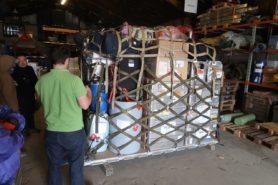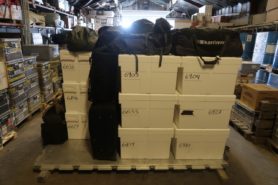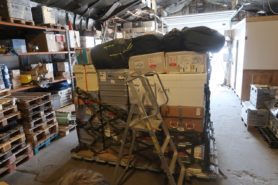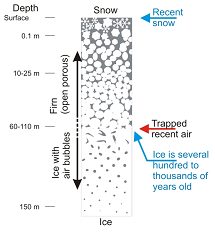Blog
Day 3: What is this all about?
Today we packed all our luggage on big aircraft pallets that will go into the C130 Hercules, which will hopefully bring us soon to the ice sheet.


 Everyone was excited and ready to take off tomorrow, but then we heard in the afternoon that we will still not have a transfer flight tomorrow. The temperature at EGRIP is actually getting much lower (presently -12ºC), but now there are other problems. The flight is now scheduled for early Sunday morning. Quite disappointing and for my project we are losing time… So since we are delayed here, I will jump a bit ahead now and I will give some more information on
Everyone was excited and ready to take off tomorrow, but then we heard in the afternoon that we will still not have a transfer flight tomorrow. The temperature at EGRIP is actually getting much lower (presently -12ºC), but now there are other problems. The flight is now scheduled for early Sunday morning. Quite disappointing and for my project we are losing time… So since we are delayed here, I will jump a bit ahead now and I will give some more information on
What is this big project all about?

Transformation from snow to ice. Figure from http://www.iceandclimate.nbi.ku.dk/research/drill_analysing/cutting_and_analysing_ice_cores/analysing_gasses/firn_zone/
The main goal of the East Greenland Ice-Core Project (EastGRIP, or short EGRIP) is to drill an ice core through more than 2500 m of ice to the bottom of the ice sheet. Year after year snow falls on the ice sheet and new snow covers older snow. So snow accumulates layer by layer the snow on the top presses on the snow below and at some point the weight above a certain layer is so high that the snow is compressed to ice. This occurs at EGRIP at a depth of about 70 m. In contrast to ice that forms from liquid water, ice that is formed this way from snow still contains air bubbles that are now trapped in the ice (see Figure on the left). So the ice sheets contain an archive of old air. When we extract the air bubbles from the ice we can measure the composition of the air in the past.
There is more fascinating information that can be derived from the ice itself: From the (isotopic) composition of the water that forms the ice we can determine the climate in the past. We know from previous ice cores, for example, about the ice ages and warm ages, but also about climate variations of shorter intervals. With new measurement methods we will be able to determine such temperature variations in the past in much more detail from the EGRIP ice core compared to previous Greenland ice cores, over a period that goes back at least 80000 years!
Because there is such a massive amount of ice on Greenland, the weight of the ice does not only compress the snow to ice, but the ice is also pushed by its own weight and flows very slowly away, from the highest points of the ice sheet to the edges. Understanding how exactly this flow works is important to predict the future of the ice sheets in a changing climate. The EGRIP location has been chosen to study in particular the ice flow. The flow velocity at the surface is 55 meter/year, and we hope to understand more about how ice deforms and slides from detailed measurements at this location.

